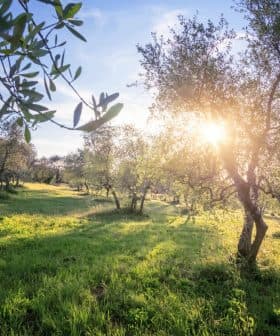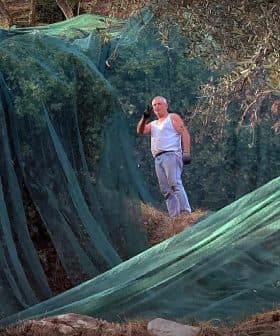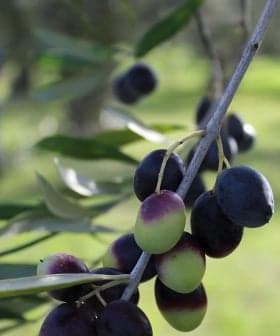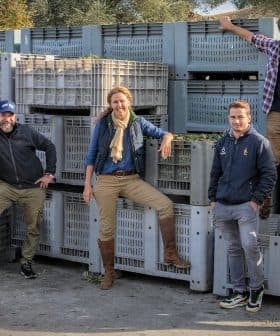Authorities Destroy Almond Tree Infected With Xylella in Central Italy
Authorities in central Italy have approved the removal and burning of an almond tree infected with Xylella fastidiosa multiplex, the first such outbreak in Lazio, prompting a response to prevent further spread of the pathogen to olive trees in the region. The European Commission warns that Xylella fastidiosa has the potential to cause significant economic losses in the EU, with the subspecies pauca already responsible for the loss of millions of olive trees in Puglia, impacting both production and employment in the region.
Authorities in central Italy have given the go-ahead for the removal and burning of an almond tree which was first found infected by Xylella fastidiosa last October.
The infection caused alarm since it was the first such outbreak in the Lazio region. The infected tree was discovered in the Camino municipality, a significant producer of almonds and olive oil.
There is no connection whatsoever between the infection found in the Canino area and the outbreaks in the Apulia region.
Researchers at the local Tuscia University reported that the tree was infected with Xylella fastidiosa multiplex, a separate species from Xylella fastidiosa pauca, which has infected millions of olive trees in Puglia in recent years.
See Also:New Projects in Puglia Emphasize Early Detection Against XylellaAccording to authorities, Xylella fastidiosa multiplex is known for its ability to thrive in almond trees, but analyses in the field have shown it does not cause the same kind of damage to olive trees.
According to the local newspaper, ViterboNews24, local authorities have installed an “area of infection” with a diameter of 50 meters around the almond tree.
A larger, 2.5‑kilometer buffer zone was also activated to monitor the eventual spread of the pathogen. In addition, the European Commission was alerted as requested by the European regulations.
“The buffer zone is characterized by a significant olive farming tradition [the region is home to the Canino Protected Designation of Origin]… and by the relevant development of almond tree growing which in the last three years has expanded to more than 150 hectares,” local authorities said.
The regional phytosanitary service also has conducted extensive research for symptoms of Xylella in local plants.
Almost 230 olive trees, 124 almond trees and several other plants were sampled and analyzed, with none found to be infected. According to local experts, the same substrain of Xylella fastidiosa was found in southern Tuscany, which borders Lazio.
According to the local authorities, olive trees have a “near to zero risk” of being infected by this Xylella fastidiosa subspecies.
“There is no connection whatsoever between the infection found in the Canino area and the outbreaks in the Apulia region, where the Xylella fastidiosa, subspecies Pauca, Codiro strain, has been known as olive tree killer,” the regional agricultural service said.
“Almond trees are vulnerable as it emerges from the analyses conducted in Tuscany, where the same subspecies, Multiplex, with the same genotype (sequence Type ST87) had been found since 2018,” they added. “In those areas, where neither olive trees nor almond trees are intensively grown, not a single olive tree has been found infected by the subspecies Multiplex ST87, while some almond trees have been identified both in the infected areas and in the buffer zones.”
According to the European Commission, Spartium junceum, Polygala myrtifolia, almond, rosemary, lavender, common myrtle and figs are the plants most commonly infected with this subspecies of Xylella fastidiosa in the Mediterranean region.
The olive oil producers association, Italia Olivicola, said in a note how the new outbreak in Lazio is “only 30 to 50 kilometers away from the Argentario Mountains in Tuscany, a region which since 2018 has been under special care for the eradication of the same Xylella fastidiosa subspecies, ST87 strain, which can attack almond trees but not olive trees.”
The association also noted how Xylella multiplex had been previously found in the Balearic islands in 2016 and Alicante, Spain, in 2017. After that, the Tuscany outbreak was detected, and the subspecies was also identified in Madrid and Porto, Portugal.
According to the European Commission: “Xylella fastidiosa has the potential of causing in the E.U., an annual production loss of €5.5 billion, affecting 70 percent of the E.U. production value of older olive trees (over 30 years old), and 35 percent value of younger ones; 11 percent of citrus; 13 percent of almond and between one to two percent of grape production in a scenario of full spread across the entire E.U.”
“This would put at risk nearly 300,000 jobs across Europe currently involved in that production,” the commission added. “In addition to direct impacts on production, pests have significant indirect effects on upstream or downstream economic sectors.”
In Puglia, the subspecies, pauca, is considered responsible for the loss of five or six million olive trees, equal to one-fourth of the total in the region, which is the most relevant olive oil-producing area in the country.
Unaprol, a producers’ association, estimated that 5,000 jobs have been lost due to the spread of Xyella fastidiosa pauca. However, some local authorities estimate many more jobs have been lost due to Xylella: closer to 33,000.









